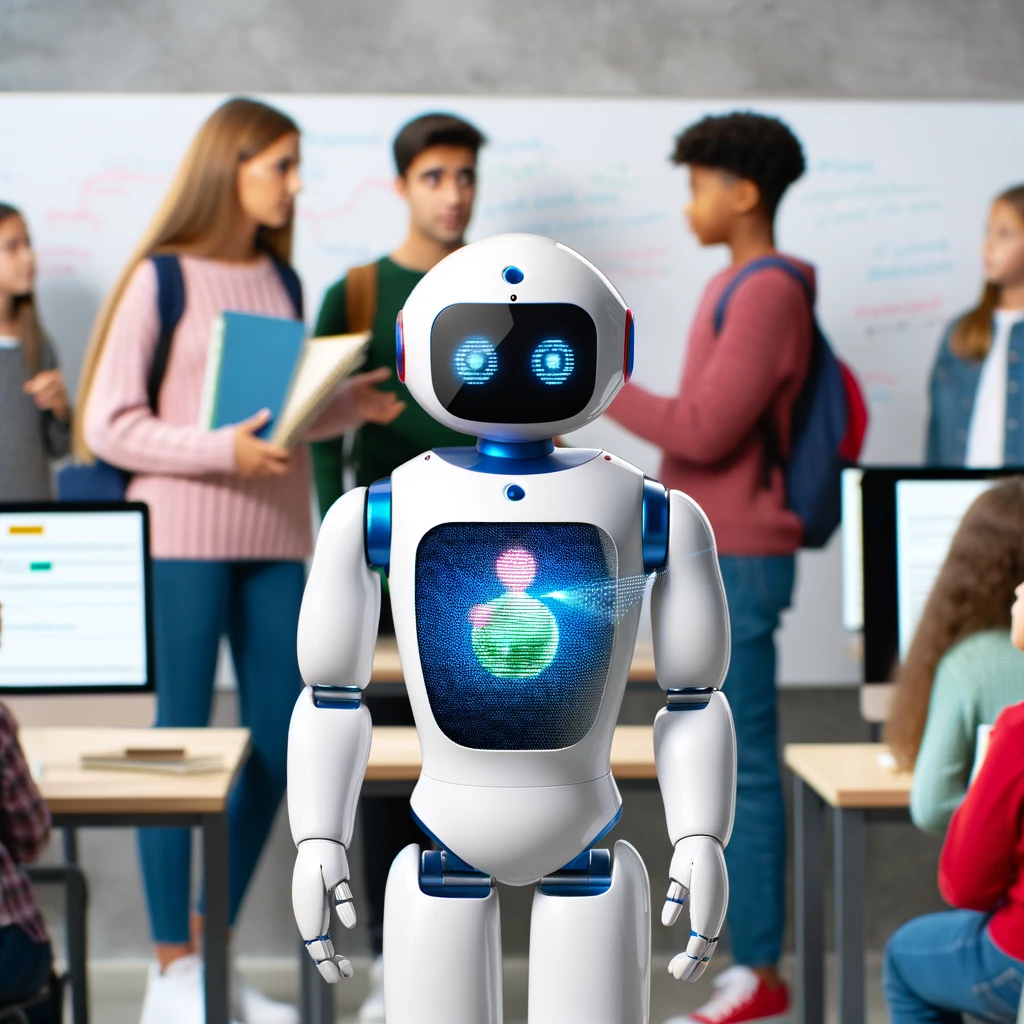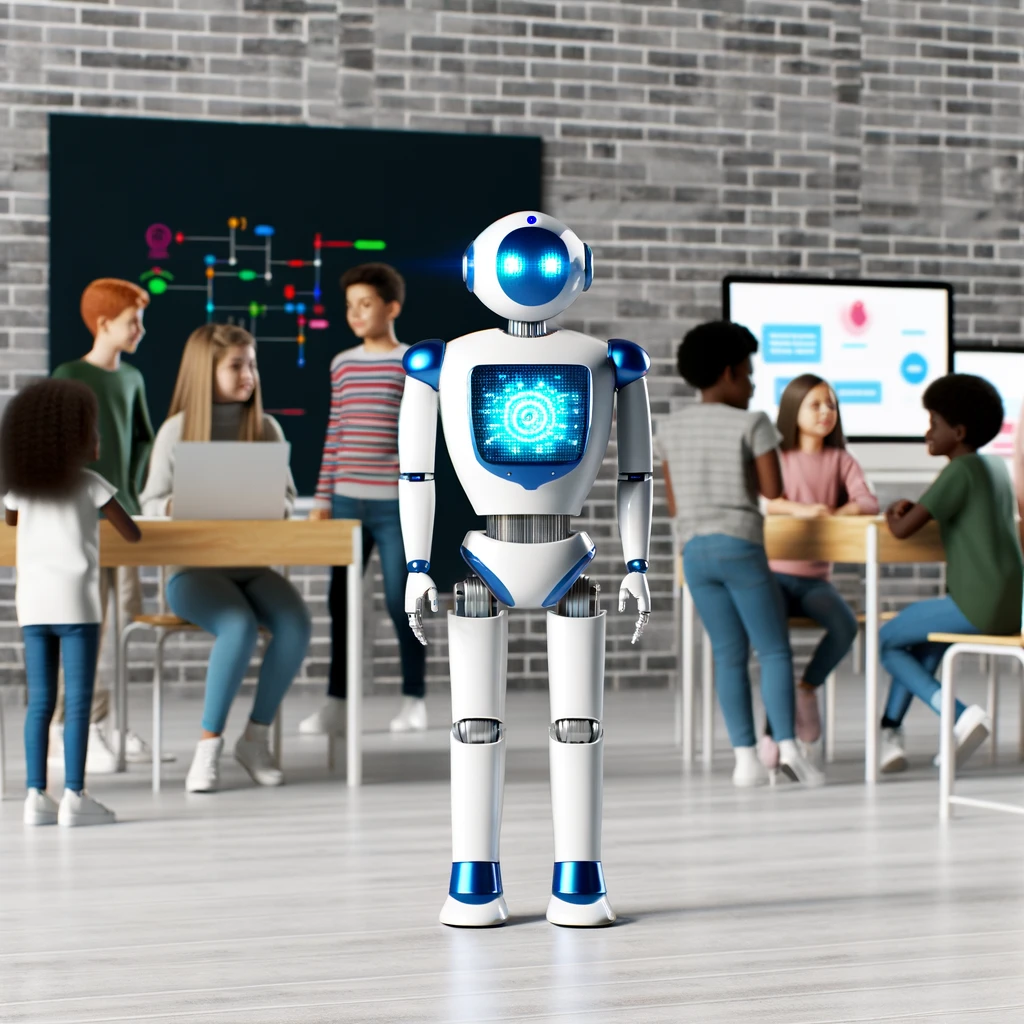
Artificial Intelligence in Teaching: Great Data-Driven Insights
Table of Contents
Artificial Intelligence

A. Artificial Intelligence in Education: A Paradigm Shift
Artificial intelligence (AI) is rapidly transforming various sectors, and education is no exception. Today, AI is not just science fiction; it is being actively used to enhance and reshape the learning process. By leveraging data-driven insights, AI offers teachers valuable tools and opportunities to personalize learning, improve student engagement, and ultimately, empower them to reach their full potential.
B. Exploring the Data-Driven Approach
This article aims to delve into the world of AI in education, specifically focusing on how it utilizes data to contribute to effective teaching. We will explore the evolution of AI in this field, delve into specific AI technologies and their applications in the classroom, and analyze how data-driven insights derived from AI are transforming teaching strategies and shaping personalized learning experiences.
C. Artificial Intelligence’s Educational Journey
While AI’s significant impact on education is a recent phenomenon, its roots can be traced back to the early days of computers. Early attempts at intelligent tutoring systems in the 1960s laid the groundwork for the current advancements in AI-powered educational tools. Today, with the increasing availability of data and the sophistication of AI algorithms, we are witnessing a surge in the development and implementation of various AI-powered technologies specifically designed to enhance teaching and learning.
On the topic of AI, be sure to check out the excellent video covering AI itself!
The Rise of Artificial Intelligence in Education
A. Historical Context:
- 1960s: The first intelligent tutoring systems emerge, marking the early exploration of AI in education.
- 1980s-1990s: Knowledge-based expert systems and early forms of adaptive learning platforms begin to gain traction.
- 2000s: The rise of the internet and advancements in computing power paved the way for the development of more sophisticated AI applications in education.
- 2010s-Present: AI integration in education accelerates, with machine learning algorithms, natural language processing, and big data analytics playing key roles in personalized learning and intelligent tutoring systems.
B. Key Milestones and Advancements for Artificial Intelligence
- Development of natural language processing (NLP) for automated assessment, feedback, and personalised learning paths.
- Machine learning algorithms for analyzing student data to identify learning gaps, predict performance, and tailor instruction accordingly.
- The emergence of intelligent tutoring systems that can adapt to individual learning styles and pace, providing targeted support and feedback.
- Growth of virtual reality (VR) and augmented reality (AR) applications offering immersive and interactive learning experiences.
C. Current Integration:
Today, AI is making its presence felt across various aspects of education, including:
Artificial Intelligence Technologies in the Classroom
- K-12 education: Personalized learning platforms, intelligent tutors, and adaptive assessments are gaining traction in classrooms.
- Higher education: AI assists with personalized learning pathways, automated grading of essays and exams, and chatbot-powered virtual assistants for students.
- Professional training and development: AI-powered platforms offer personalized learning experiences for professionals seeking to upskill or reskill.
A. Unveiling the Toolbox of Artificial Intelligence:
The educational landscape is witnessing a diverse array of AI tools and technologies:
- Machine learning algorithms: Analyze student data to personalize learning paths, predict performance, and identify at-risk students.
- Educational chatbots: Provide personalized learning support, answer questions, and offer feedback in real time.
- Adaptive learning platforms: Tailor learning materials and exercises to individual student needs and progress, adjusting difficulty and content based on performance.
- Automated assessment tools: Efficiently grade essays, quizzes, and other assignments, providing students with immediate feedback.
- Virtual reality (VR) and augmented reality (AR): Create immersive and interactive learning experiences, allowing students to explore historical events, conduct simulations, and interact with complex concepts in a virtual environment.
B. Putting Theory into Practice:
- Lesson Planning: AI can analyze student data and learning styles to recommend personalized lesson plans and activities, ensuring relevance and engagement.
- Grading and Feedback: Automated grading tools can free up teacher time for more personalized feedback, while AI-powered chatbots can offer immediate support to students.
- Personalised Learning: Adaptive learning platforms analyze student performance and adjust difficulty levels, content, and learning pathways to meet individual needs and learning styles.
Benefits and Challenges for Artificial Intelligence:
Benefits:
- Personalised learning: AI caters to individual needs and learning styles, fostering deeper engagement and understanding.
- Improved efficiency: AI automates tasks like grading and administrative work, allowing teachers to focus on personalized instruction and student support.
- Early intervention: AI analysis can identify at-risk students and learning difficulties early on, allowing for targeted intervention and support.
- Accessibility: AI can provide additional learning support to students in remote locations or with disabilities.
- Bias and fairness: AI algorithms can perpetuate existing biases present in the data used to train them, leading to unfair assessments or unequal learning opportunities for certain groups.
- Data privacy concerns: Ensuring the security and ethical use of student data collected through AI applications is crucial.
- Teacher displacement concerns: Some fear that AI may replace teachers entirely, neglecting the irreplaceable value of human interaction and emotional guidance in education.
- Over-reliance on technology: Overdependence on AI could hinder the development of critical thinking skills and independent learning in students.
Data-Driven Insights from Artificial Intelligence
AI’s true power lies in its ability to analyze vast amounts of data, uncovering valuable insights that inform and improve teaching strategies:
A. Decoding Student Data with Artificial Intelligence:
- Learning patterns: AI analyzes student performance data to identify individual learning patterns, strengths, and weaknesses.
- Engagement levels: AI tracks student engagement in different activities and learning materials, revealing areas of difficulty or disinterest.
- Predictive analytics: AI models can predict student performance and identify at-risk students early on, allowing for proactive intervention and support.
B. Case Studies for Artificial Intelligence in Action:
- Project BLOOM (Bloomfield Hills Schools, Michigan): An AI-powered adaptive learning platform personalized learning for students, leading to significant improvements in math and reading scores.
- DreamBox Learning: An AI-driven math program that adapts to individual student needs, resulting in increased student engagement and improved math performance.
- Duolingo: A language learning application powered by AI algorithms, offering personalized learning paths and gamification elements to boost user engagement.
C. The Power of Prediction using Artificial Intelligence:
Predictive analytics, a key application of AI in education, allows educators to:
- Proactively address learning gaps: Identify students who might struggle with specific concepts and provide targeted support before they fall behind.
- Tailor curriculum and instruction: Adapt teaching strategies and resource allocation based on predicted student needs and learning styles.
- Measure the effectiveness of interventions: Track the impact of different teaching strategies on student outcomes and adjust accordingly.

Personalized Learning Through Artificial Intelligence
A. AI: The Architect of Individualized Learning:
AI plays a pivotal role in creating personalized learning experiences that cater to individual student needs, learning styles, and goals.
- Adaptive learning platforms: These platforms use AI algorithms to analyze student data and adjust the difficulty level, content, and pace of learning based on individual progress and performance.
- Intelligent tutoring systems: These AI-powered systems provide personalized feedback, explanations, and guidance to students, mimicking the role of a human tutor.
- Learning recommendations: AI can analyze student profiles and recommend learning resources, courses, or activities that align with their interests, goals, and learning styles.
B. Examples of Adaptive Learning Platforms:
- Khan Academy: Offers personalized learning paths in various subjects, with AI algorithms tailoring instructional materials and exercises based on student progress.
- IXL Learning: Provides personalized practice problems and activities in math, language arts, science, and social studies, adapting based on student mastery levels.
- McGraw-Hill Connect: An adaptive learning platform that offers personalized learning paths for various college courses, adjusting content and assessments based on student performance.
C. The Impact of Personalized Learning:
Studies have shown that personalized learning approaches powered by AI can lead to:
- Improved academic performance: Students are more engaged and motivated when learning is tailored to their individual needs and interests.
- Increased knowledge retention: Personalized learning helps students retain information more effectively by focusing on areas they need to master.
- Enhanced student satisfaction: Students feel more empowered and in control of their learning journey, leading to higher levels of satisfaction and self-confidence.
Artificial Intelligence in Teacher Support and Development
A. Empowering Educators:
AI is not intended to replace teachers; rather, it aims to empower them by providing valuable support and tools:
- AI-powered professional development: Personalized learning platforms and AI-driven simulations can provide tailored professional development opportunities for teachers.
- Automated administrative tasks: AI can handle administrative tasks like grading, scheduling, and student data management, freeing up teacher time for planning, instruction, and student interaction.
- Real-time feedback and insights: AI can provide teachers with real-time data and insights into student performance, allowing them to adjust teaching strategies and address individual student needs.
B. Enhancing Teaching Efficiency:
AI can alleviate teacher workload and administrative burdens, allowing them to focus on their core strengths:
- Personalized feedback and instruction: AI can automate tasks like basic feedback and repetitive exercises, freeing up teacher time for providing personalized feedback and guidance to students.
- Formative assessment: AI-powered tools can assist with formative assessments, providing teachers with ongoing data about student learning and understanding, allowing for adjustments to instruction as needed.
- Collaboration and communication: AI platforms can facilitate communication and collaboration between teachers, parents, and students, fostering a more connected and supportive learning environment.
C. Real-World Examples:
- Amplify Education: This platform uses AI to analyze student data and suggest personalized learning strategies for teachers.
- Duolingo for Schools: This AI-powered language learning platform provides personalized learning paths for students and real-time performance data for teachers.
- McGraw-Hill Create: This platform offers teachers AI-powered tools for creating personalized learning materials, assessments, and activities.
Ethical Considerations and Privacy Concerns
Despite the potential benefits of AI in education, it is crucial to address ethical considerations and privacy concerns:
A. Navigating the Ethical Landscape:
- Bias and fairness: Ensuring AI algorithms are free from bias and do not discriminate against any group of students is paramount.
- Transparency and explainability: AI models should be transparent and explainable, allowing educators and students to understand how decisions are made and avoid “black box” situations.
- Data privacy and security: Robust measures must be implemented to ensure the security of student data and protect student privacy.
B. Addressing Privacy Concerns:
- Data ownership and control: Students and parents should have control over how their data is collected, used, and shared.
- Clear communication and consent: Clear communication regarding data collection practices and obtaining informed consent from students and parents are essential.
- Data security measures: Implementing robust data encryption, access controls, and security protocols to safeguard student data is crucial.
C. Best Practices for Responsible AI Use:
- Prioritizing human oversight and control: AI tools should be used to supplement, not replace, human judgment and expertise in education.
- Open and transparent communication: Open communication with students, parents, and educators about AI use in education is essential.
- Continuous monitoring and evaluation: Regularly monitoring and evaluating the effectiveness and impact of AI tools is important to ensure responsible and ethical implementation.
The Future of AI in Teaching
A. Emerging Trends:
- Integration of AI with other technologies: Combining AI with virtual reality, augmented reality, and other emerging technologies can create even more immersive and personalized learning experiences.
- Focus on building critical thinking skills: AI can be used to create learning environments that foster critical thinking, problem-solving, and creativity, crucial skills in the 21st century.
- Emphasis on collaboration and communication: AI can facilitate collaborative learning experiences and enhance communication between students, teachers, and parents.
B. Potential Developments:
- Advanced natural language processing: This will enable AI tutors to provide more nuanced and personalized feedback and support to students.
- Adaptive learning on a larger scale: AI could personalize learning for entire classrooms or schools in real-time, adjusting instruction based on collective student data and needs.
- AI-powered curriculum development: AI could analyze large datasets of student learning outcomes and feedback to inform the development of more effective and engaging curriculum materials.
C. Shaping the Educational Landscape:
AI has the potential to revolutionize the educational landscape by:
- Making education more accessible and inclusive: AI can provide personalized learning opportunities for students with diverse needs and learning styles.
- Empowering teachers: AI can free up teacher time for more creative and individualized instruction.
- Making learning more engaging and effective: AI can personalize learning experiences, catering to individual needs and fostering deeper engagement.
Conclusions for Artificial Intelligence
A. Recap and Key Takeaways:
This article explored the use of Artificial Intelligence in education, highlighting its potential to transform teaching and learning through data-driven insights. We discussed the benefits, challenges, and ethical considerations of AI and its potential role in shaping the future of education. The key takeaways are:
- AI offers valuable tools and insights to personalize learning, improve engagement, and empower teachers.
- Data analysis plays a crucial role in informing AI-powered interventions and tailoring learning experiences.
- Ethical considerations and responsible use of technology are paramount to ensure equity, fairness, and privacy in AI-powered education.
B. Reflection on the Transformative Potential:
While AI cannot replace the irreplaceable role of human educators, it holds immense potential to transform the educational landscape. By harnessing the power of AI responsibly and ethically, we can create a future where education empowers all individuals to reach their full potential and thrive in a rapidly evolving world.
If you have enjoyed this blog post, be sure to check out some of our other insightful articles at LearningMole! If you are further interested in Educational content be sure to check out our post about Online Learning!


Leave a Reply